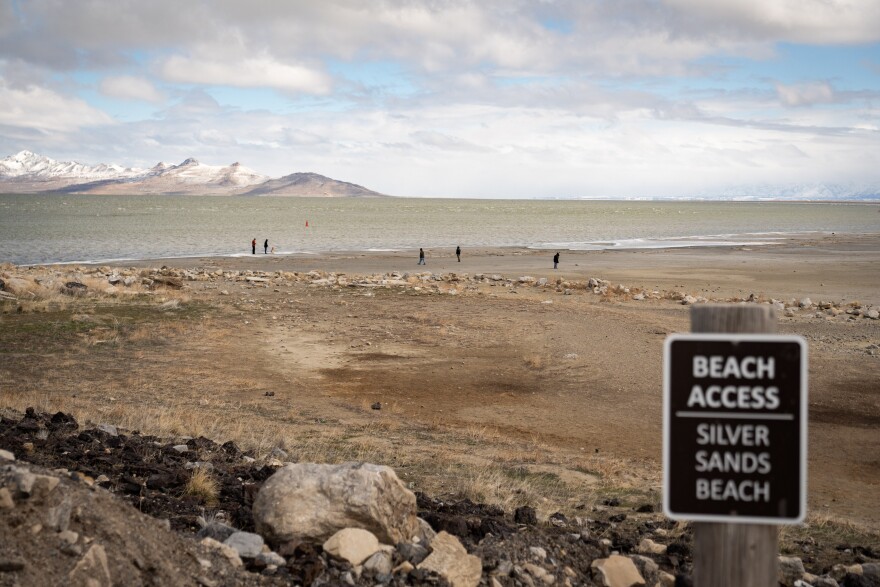The high Utah mountains gained 30 inches of water this winter, compared to 12 inches the year before. That amount of water in one season has done wonders for Utah’s ongoing drought.
“This time last year, about 99% of the state was in severe drought,” said Laura Haskell, the drought coordinator with the Utah Division of Water Resources. “So we have just about 14% [that] is in the moderate drought category. And that's it.”
Prior to this winter, Haskell thought it would take “several years” to replenish the reservoirs because of “how low they were.” Now, “all our reservoirs are expected to fill this year,” with the exception of Strawberry and Lake Powell. While Great Salt Lake’s water level has risen by 4 feet this year, it still needs more to ease concern.
David Tarboton, director of the Utah Water Research Laboratory at Utah State University, said the moisture this year has essentially lifted Utah out of the drought — for now.
All this is good news for the desert state, but it isn’t guaranteed to occur year after year. Since Utah has a dry climate, Tarboton said drought and water shortages are “a normal situation here,” which the state “must live with and manage.”
Haskell noted the abundance of water grants the state “a little bit of breathing room to build up some resiliency for years of future drought.”
In the context of Great Salt Lake, Tarboton said all this water buys the state three to four years before the lake drops back to the critical levels it experienced last November when it was on the verge of ecological collapse.
“But really, we don't want to get to the critical levels. We actually want the lake to recover to healthy levels,” he said. “And this year has taken us more than halfway there. But it's not all the way there.”
Tarboton said it would take another record-breaking winter to revive Great Salt Lake to a healthy level.
Even though Utah currently has a three to four-year grace period with water woes, Tarboton said conditions could change quickly. If 2024 and 2025 are bone dry like 2022, “then we would have very small stream flows and the reservoirs would be back down again.”
Haskell is aware of the tumultuous water circumstances in Utah. Even in a good water year, she said the “best scenario is to use as little as possible.”
“We just don't know what the next year is going to bring,” she said. “2020 was kind of record-breaking heat and record-low precipitation. And so that combination drained those reservoirs much more quickly than we've seen before.”
Haskell added this isn’t the time to have a lavish lawn, and residents should take advantage of state and local rebates to rip out grass for something less water-intensive. She said up to 80% of residential water use can be attributed to landscaping.
“Is it, you know, the best use of water? Or do they want to do something different with some different plants that are better for our environment?” she said.
While Tarboton believes the state doesn’t need to enforce “drastic [water] restrictions” this year, officials should be putting “measures in place for the future years when it's going to get drier.”
To him, those include quantifying how much water the state actually has. In the case of Lake Powell, Tarboton it’s unclear when that will fill since its main tributary, the Colorado River, is overallocated and split between seven states. In other words, there already isn’t enough Colorado River water to go around.
Utah has already started to meter agricultural water usage, which he said is effective. But it’s time, Tarboton said, to start “getting smarter” about how much water the state has and asking “hard questions” about water consumption and how to use it most efficiently.
“We're still going to have to make decisions about which sectors need to get out of our limited water and how much. And where can we be in terms of optimizing our water resources,” he said. “Can we be more efficient with our agriculture and not consume so much water? Can we plant and manage crops that perhaps don't use so much? Can we, in our cities, reduce the use of grass so that we don't consume so much?”
He said Utah has never grappled with the “day zero concept,” which is the anticipated date when the state would run completely out of water.
“We should be looking at our water carefully so that we never really get into that situation of having to worry about a day zero situation,” Tarboton said.






